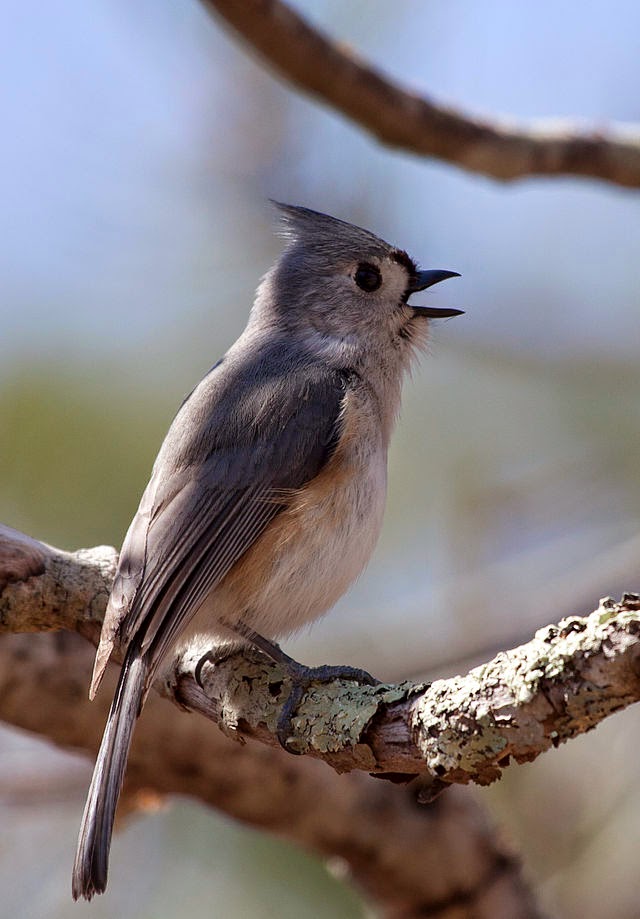Tufted titmouse Facts
Tufted titmouse Facts
Undaunted by the presence of people, this lively bird sometimes will swoop down and pluck out a human hair to use for its nest.
1. The tufted titmouse is a gray and white bird with a smudge of orange under the wings. Both males and females look the same. This bird is a favorite among bird-lovers due to the bird’s round shape, large black eyes, and unusual set of feathers atop the head. These head feathers are called a “crest,” which can be raised or lowered depending on the bird’s mood.
2. Tufted titmice can be seen all year long. They live in the eastern half of the United States from the Canadian border to the middle of Florida. These birds live in forests, orchards, and parks.
3. The Tufted Titmouse lives in woodlands, groves, and mature trees.
4. They eat acorns, sunflower seeds, berries, caterpillars, moths, flies, insect eggs, snails, and spiders. The things that eat the Tufted Titmouse are cats, dogs, and snakes.
5. It has a song like this: “peter, peter, peter”.
6. Tiny feet to hold the seed and uses its tough beak by hitting the nut rapidly until it gets the nutrients.
7. Titmice eat insects and berries but also visit birdfeeders and are very good at cracking open seeds! Like their relatives the chickadees, titmice collect and hide birdseed in the fall and winter.
8. When the weather is too cold to forage (look for food), titmice will eat seeds from their hidden stash.
9. Titmice nests aren’t easy to find. In the spring, a male and female titmouse forms a pair and begins looking for a hole in a tree to build their nest. Often the hole was left behind by a woodpecker. The titmice then build a cup-shaped nest inside the hole using moss, grasses, and leaves. Tufted titmice are brave little birds. Occasionally, they have been known to steal a few hairs from mammals for use in their nests. When the nests are ready, the female lays three to nine white spotted eggs. In about two weeks, the eggs will hatch and out comes the next generation of tufted titmice!
10. Undaunted by the presence of people, this lively bird sometimes will swoop down and pluck out a human hair to use for its nest. The largest titmouse, it will fly toward people that are making squeaking sounds to attract birds. It is intelligent and may learn to eat food out of a human hand.
11. Often it can be seen digging in the ground, where it stores surplus sunflower seeds.
12. Adapted to wooded residential areas with large shade trees and to bird feeders and nesting boxes, it has become a familiar yard bird with its jaunty crest and large black eyes set against gray plumage.
13. Monogamous and a solitary nester. The Tufted Titmouse mates for life. Incubation 13-14 days by the female. The altricial young stay in the nest 15-18 more days, where they are brooded by the female and fed by both sexes.


Comments
Post a Comment